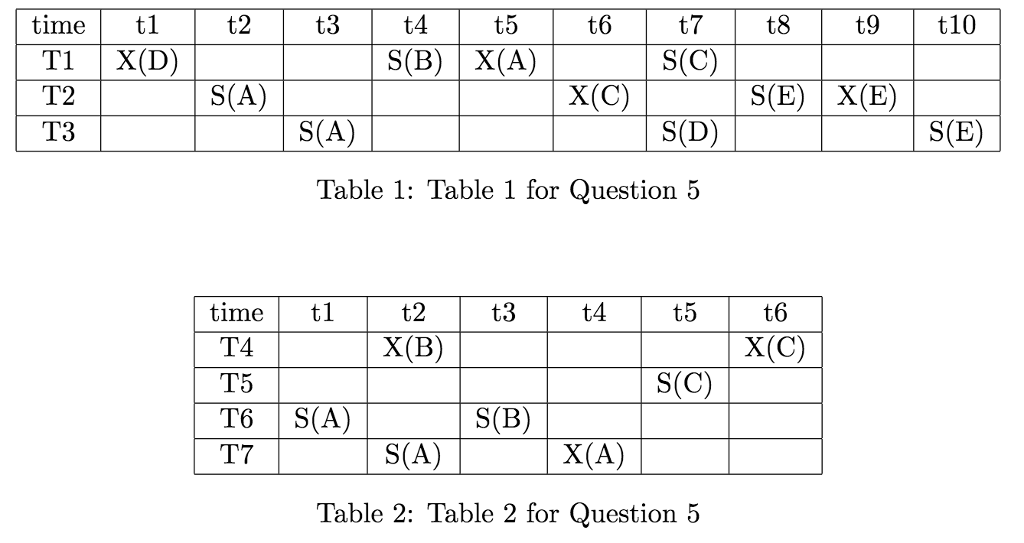Question
5. Consider Table 1 depicting the lock requests of transactions T1, T2 and T3, and Table 2 depicting the lock requests of Transactions T4, T5,
5. Consider Table 1 depicting the lock requests of transactions T1, T2 and T3, and Table 2 depicting the lock requests of Transactions T4, T5, T6 and T7. S(z) and X(z) respectively shows the shared and exclusive lock requests for the data object z.

(a) For the lock requests in Tables 1 and 2, which lock will be granted or blocked by the lock manager? For example, X(D) at time t1 is marked as granted.
(b) Give the wait-for graph for the lock requests pesented in Tables 1 and 2. Determine whether there exists a deadlock in the lock requests in Tables 1 and 2. Explain the reason.
(c) Assume that lock manager uses Wait-Die policy to prevent deadlock. Determine which lock request will be granted, blocked or aborted for the lock requests presented in Tables 1 and 2. A transaction with a smaller ID has higher priority (T 1 > T 2 > T 3 > T 4).
(d) Assume that the lock manager uses Wound-Wait policy to prevent deadlock. Determine which lock request will be granted, blocked or aborted for the lock requests presented in Tables 1 and 2. A transaction with a smaller ID has higher priority (T1 > T2 > T3 > T4).
Step by Step Solution
There are 3 Steps involved in it
Step: 1

Get Instant Access to Expert-Tailored Solutions
See step-by-step solutions with expert insights and AI powered tools for academic success
Step: 2

Step: 3

Ace Your Homework with AI
Get the answers you need in no time with our AI-driven, step-by-step assistance
Get Started


